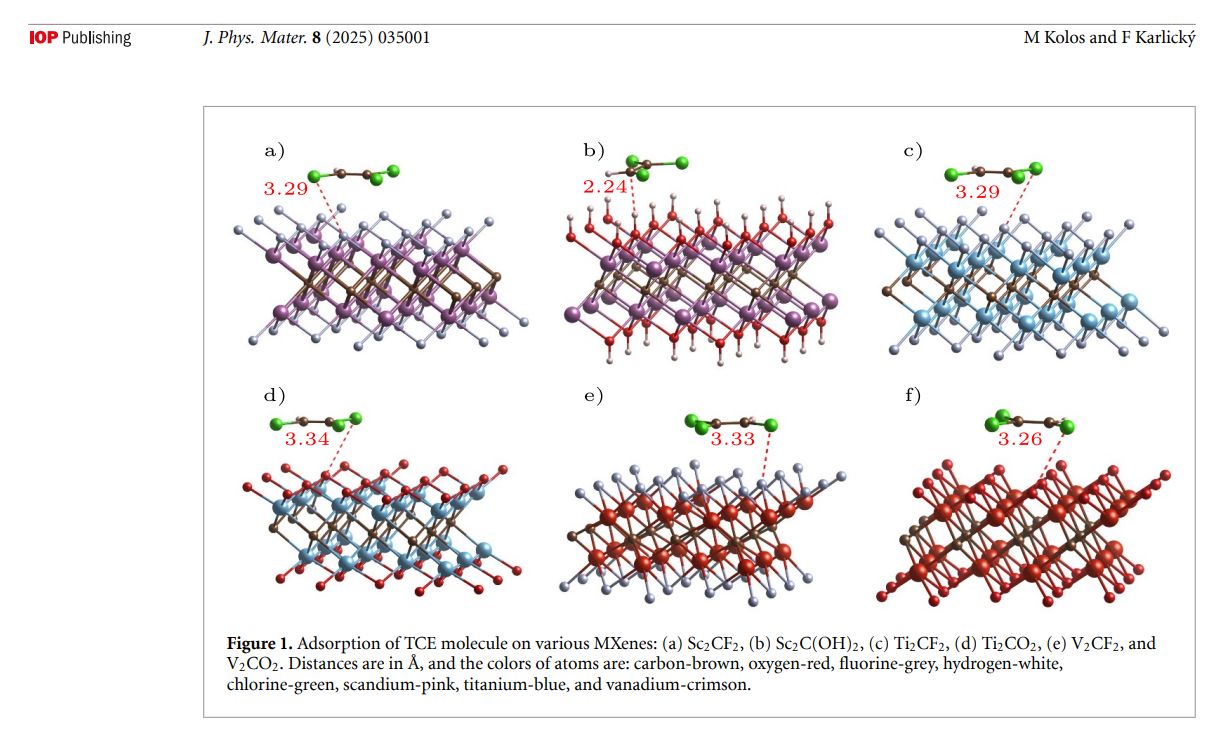Miroslav Kolos and František Karlický published a new paper!
Computational screening of MXene-based catalysts for chlorinated hydrocarbons removal
Link here: https://iopscience.iop.org/article/10.1088/2515-7639/add37d
Abstract:
Chlorinated hydrocarbons, widely used in industrial applications, pose significant environmental and health risks due to their persistence and toxicity. Conventional remediation methods often face efficiency limitations, necessitating the exploration of innovative materials for effective pollutant degradation. MXenes, a novel class of two-dimensional materials, have emerged as promising candidates for environmental remediation due to their exceptional chemical reactivity and tunable surface properties. This study employs density functional theory to investigate trichloroethylene’s (TCE) adsorption and dechlorination mechanisms on variously terminated MXenes. Our results reveal that Ti2C(OH)2 and V2C(OH)2 facilitate spontaneous TCE dechlorination. With realistic termination ratios, the reaction barriers of TCE dechlorations are below 1 eV. Remarkably, only with just 17% of –O terminations substituted by –OH, non-defected Ti2CO2 demonstrates robust dechlorination, forming dichloroethylene and hydrochloric acid (HCl). Additionally, single terminal vacancy MXenes exhibit highly favorable reaction pathways with barriers as low as 0.1 eV. Beyond TCE, chlorinated hydrocarbons lindane and dichlorodiphenyltrichloroethane (DDT) spontaneously dechlorinate on pristine Ti2C(OH)2, underscoring the broad applicability of MXenes in chlorinated hydrocarbon remediation. This work highlights MXenes as scalable, efficient, and versatile materials for addressing persistent organic pollutants, providing critical insights into their mechanisms and potential for practical implementation in environmental cleanup strategies.

